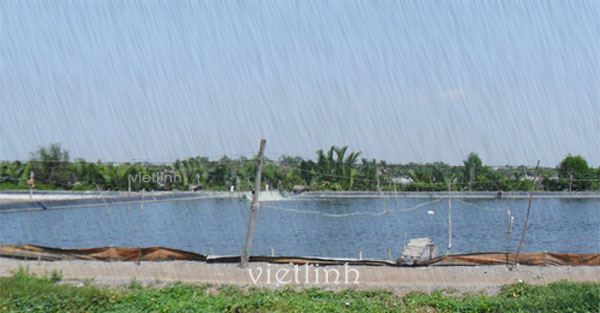Tropical depressions occur when low pressures are accompanied by cold air. Sometimes, air temperatures are low, leading to lower water temperature in shrimp ponds. During tropical depressions, shrimp is susceptible to diseases, especially EMS (Early Mortality Syndrome) and white spot syndrome. Such conditions cause great damages to farmers.

In order to reduce detrimental effects of tropical depressions, farmers should note the following tips:
1 / Do not let pond water levels become too low. Keep pond water levels at least 1.2 meters or more.
Pond water levels should not be deeper than 1.6 meters. During tropical depressions, the weather is cloudy along with rains. Therefore, the content of dissolved oxygen of pond bottom is low.
2 / Tropical depressions are often accompanied by rains, which change environmental factors in ponds. The levels of pH tend to decrease. Farmers should use lime to keep pH stable.
3 / When the weather is unfavorable for farming, shrimp will reduce feed intake. In the period of tropical depression, the amount of feed should be reduced to avoid feed waste and negative influences on pond environment.
4 / Weather changes cause fluctuating environmental temperatures. If shrimp are weak, along with adverse weather, shrimp is more susceptible to diseases. In this period, farmers should increase resistance for shrimp by blending feed with Vitamin complex, especially Vitamin C.
5 / Increase the use of paddle wheel aerator and oxygen supply for pond bottom.© 2019 Viet Linh
- Aquaculture in rainy and flood season
- Managing shrimp pond during rainy season
- Managing shrimp pond during rainy season (part 2)
- Tags: tropical depression; rain; shrimp; shrimp farming